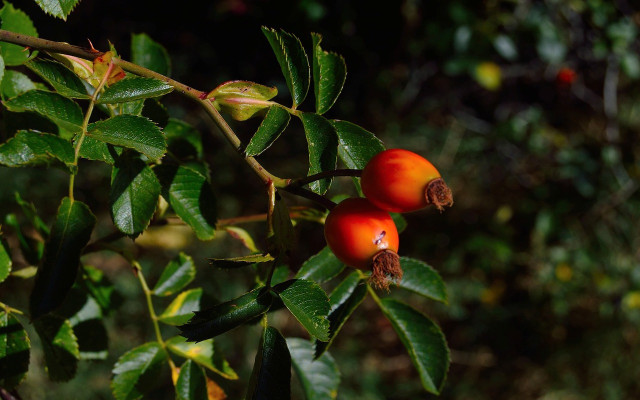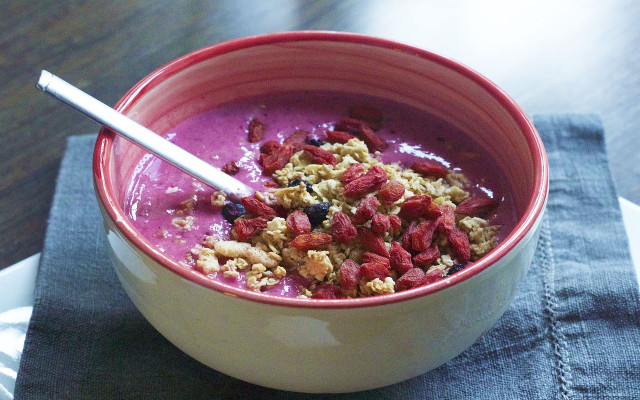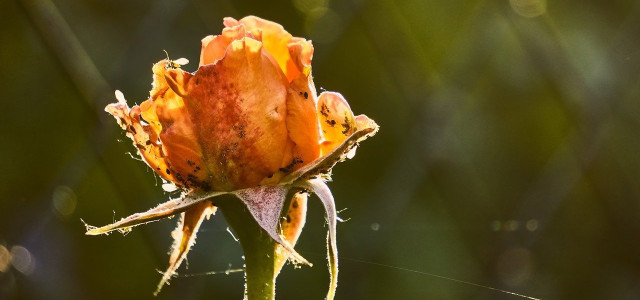You can grow a goji berry plant in your own backyard! This will not only save you money, it will also allow you to know exactly where your fruit is coming from. Here are some tips for growing goji berries.
Growing Goji Berries in Your Garden
The goji berry became popularized during the “superfood” boom. When dried, the red berries are reminiscent of raisins; the fresh fruits resemble larger rose hips. Although the plant is said to have originated in China, the goji berry can also be planted here in the States. Zones 5-9 (USDA plant hardiness) provide the best climate for growing goji berries.
The deciduous goji berry plant (or shrub) is known by several names including boxthorn, matrimony vine, or lycium barbarum and the berries are commonly referred to as wolfberries. The goji berry plant shows off stunning purple flowers from June until August, which then give way to the delicious fruit.
Goji Berry Plants: Varieties, Where and When to Plant
When it comes to types of Goji berry plants, there are essentially two categories.
The first group includes varieties with orangey-red fruits that can be enjoyed raw due to their milder taste:
- Big Lifeberry
- NQ1
- L22
- Turgidus
The other category contains varieties with bright red berries that are slightly tarter in taste, but taste much milder when dried.
- Big & Sweet
- Korean Big
- Instant Success
- Sweet Lifeberry

Location and Soil
There are three ways to go about growing goji berries. You can grow them from seed (takes the longest to harvest), from a cutting (takes less time to harvest than growing from seeds) or you can begin your journey with a potted Goji berry plant. All methods will achieve the same results, time being the only difference.
Growing goji berries requires a sunny location. Despite being a tough wild plant, in a domestic setting, it’s important that they are not planted too close to other plants. If the plant doesn’t have proper air circulation, they are susceptible to powdery mildew.
Goji berry plants don’t require much in the way of soil. The shrubs can grow in any soil type provided it is well-draining and has a slightly acidic pH level, which you can test with a soil test kit.**
Planting Season
Sow the seeds indoors in early spring, transplanting them to a larger pot when they are sturdy enough to handle. Depending on where you live,
you can plant goji berries from March to May when the ground is not frozen. The second planting period is from August to October.
Growing Goji Berry Plants: Garden Bed or Pot
Planting in the Garden
- Dig a hole measuring 15” x 15” x 15”. The distance to the neighboring plant should be approximately 5ft.
- Spread some organic fertilizer or compost on the bottom of the hole and spread about half of the dug up dirt on top of it. The hole should remain about 8 inches deep.
- Place the goji berry plant in the hole and place some potting soil directly under and around the plant.
- Cover the hole with the remaining dirt.
- Give the plant a good watering. Once the plant starts to establish, put a stake in the ground and tether the plant to it so that it stays stable.
Planting in a Pot
Growing goji berries in a pot or container works just as well. The shrub remains smaller and more contained, and will still bear quite a lot of fruit. Pay attention to the following things:
- Choose a large planter to plant the goji berry, it sets a large root so the container needs to be a minimum 5 gallon.
- The pot should have enough drainage holes to prevent waterlogging.
- Choose a soil mixture of two parts potting soil and one part sand.
- After planting, give the goji berry plant a good watering.
Care
You don’t need to take special care of the goji berry plant, though they are susceptible to aphids. Water it moderately, keeping the soil moist and avoid waterlogging. Fertilize it with compost in the spring, making sure to maintain the pH levels.
Harvest
If you are growing goji berries from seed, you can harvest the first fruits in the third year. A shrub can bear up to five kilograms of fruit. Harvest time is from August to October.
Benefits of Goji Berries
Growing goji berries can be very beneficial for both your health and the environment.



Goji berries are full of healthy ingredients such as vitamin C, iron, and calcium and have been considered a traditional remedy in Asia for thousands of years.
Most goji berries in the supermarket come from China, which causes a bit of a dilemma. Regulations on pesticides and other environmental toxins are not always strictly observed in China, so you have no way of knowing what they’ve been treated with. Additionally, goji berries have to be transported a long way to our shelves, which contributes to climate-damaging CO2 emissions.
Untreated Goji berries from your own garden can go straight from the bush to your plate…or your mouth!
This article was translated from German by Karen Stankiewicz. You can view the original here: Goji-Beere pflanzen: Bau dein eigenes Superfood an
Important Information regarding Health-related Topics.
** Links to retailers marked with ** or underlined orange are partially partner links: If you buy here, you actively support Utopia.org, because we will receive a small part of the sales proceeds. More info.Do you like this post?







